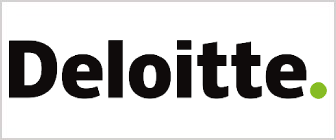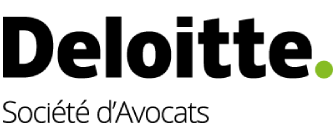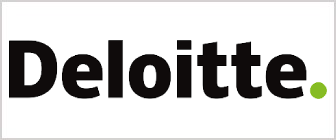Interview with Eric Lesprit, partner, Transfer Pricing, Deloitte Société d’Avocats, France
1. What is the most significant change to your region/jurisdiction’s tax legislation or regulations in the past 12 months?
For this interview, we are looking at the EU landscape from the perspective of developments in France.
The past 12 months have witnessed a notable shift in our tax landscape, with a pronounced emphasis on Transfer Pricing (TP). One of the most significant developments is an increased focus on transfer pricing matters within tax audits, which can put pressure on taxpayers who are not prepared for such an investigation. This is evidenced by the inclination of tax audit services to append substantial 40% penalties where transfer pricing reassessments are required to close the audits.
Adding to the dynamics of this evolving landscape is the recent update of the small and medium international groups' transfer pricing guide. This update reflects a proactive approach to aligning guidance with the contemporary challenges faced by businesses operating in an increasingly complex global environment.
Furthermore, a noteworthy legislative initiative has taken shape with the introduction of a draft "anti-fraud" package. This legislative proposal has been submitted to the French Parliament for consideration in the 2024 finance law. Within the ambit of this proposed legislation, TP emerges as one of the key focal points. The draft underscores the government's commitment to addressing fraudulent practices, with TP being identified as a critical area warranting targeted measures.
2. What has been the most significant impact of that change?
Tax auditors have shifted their investigative process to prioritize Transfer Pricing from the outset of the audit process. This involves early requests for TP documentation, review of the actual execution of the relevant transactions, and matching the TP documentation to the related execution in a thorough and detailed manner.
The auditors' proficiency in identifying deviations between documentation and actual operational realities is noteworthy. They methodically track these variances, leveraging them to challenge the functional analysis, contest the company's profit level, or even question the selected method employed by the group. Such deviations often result in substantial reassessments, providing auditors with a basis to impose penalties. In some instances, auditors assert that these discrepancies imply an attempt by the group to conceal information or deceive the tax administration.
In France, the recent introduction of the "anti-fraud" package, which incorporates the OECD hard-to-value intangible rules into French tax law, adds a new layer of complexity. Tax auditors are now compelled to pay close attention to intangible transfers, ushering in a new normal for their investigations. The inclusion of information to be provided and an ex-post approach further intensifies the scrutiny applied by tax audit services.
3. How do you anticipate that change impacting your work and the market moving forwards?
In essence, such deep investigation demands a holistic approach to transfer pricing compliance—one that underlines the importance of not considering documentation purely as a regulatory requirement. Instead, it positions documentation as a dynamic tool that not only safeguards against potential risks but also strategically shapes the narrative during audits. This proactive stance becomes paramount in t navigating the intricate interplay between operational realities and the evolving regulatory framework, to help organizations be well-positioned to face the complexities of the heightened audit environment.
4. How has this changed the way you offer tax advice?
These developments demonstrate the importance of taking a proactive and strategic approach to transfer pricing, and compliance with applicable laws. Taxpayers are now required to not only ensure the reliability of their technical documentation but also to strategically leverage it as a tool for pre-emptive issue resolution and effective communication with tax authorities. This paradigm shift reflects a broader recognition of the evolving dynamics and risks associated with transfer pricing, positioning tax advice as a key element in navigating the intricate regulatory landscape and ensuring optimal compliance and risk management for groups.
5. What potential other legislative/regulatory changes are on the horizon that you think will have a big impact on your region/jurisdiction?
In September 2023, the EU Commission unveiled a directive proposal aimed at establishing a standardized implementation of transfer pricing rules across EU member states. This proposed harmonization of rules holds the potential to serve as a valuable simplification tool, offering international groups a streamlined approach to design and set in place their transactions within Europe. Simultaneously, it could emerge as a potent instrument for EU tax administrations, facilitating the mitigation of double taxation risks. A central objective of the Commission is to instigate a simplification process within the transfer pricing arena, ushering in a shared set of rules that would curtail compliance costs for multinational enterprises (MNEs) operating in the EU.
The proposed directive outlines specific rules designed to achieve this harmonization, encompassing a uniform definition of related parties, including a common standard for capital shares. Additionally, it introduces a European standardization of the interquartile range, as well as measures for compliance simplification and comprehensive guidance regarding transfer pricing adjustments.
The potential implications of the proposed directive are significant. If adopted by EU Member States, it would establish a unified landscape for international groups operating in Europe, effectively implementing OECD transfer pricing principles in EU States that are not OECD members. However, the road to consensus may prove challenging, given that unanimity is required among EU member states to implement tax rules. This poses a potential hurdle, especially for countries where the proposed directive deviates substantially from existing national rules, potentially necessitating major changes in their tax frameworks. The success of this harmonization initiative hinges on navigating these complexities and garnering collective support from EU member states for a transformative shift in transfer pricing regulations.
6. What are the potential outcomes that might occur if those changes are implemented?
The September 2023 directive proposal from the EU Commission unfolds as a significant development closely tethered to OECD transfer pricing recommendations. However, a distinctive EU approach is discernible in the proposal, suggesting the potential emergence of a unique EU perspective that could deviate from the established norms of the OECD. Notably, the inclusion of the EU Commission's claim for the ability to establish EU-specific rules introduces an intriguing element that may elevate the risk of diverging from international OECD standards, possibly giving rise to a distinct EU transfer pricing framework.
A pivotal aspect of the proposed directive is the redefinition of the "related party," targeting a 25% capital share. This proposed shift contrasts with the prevailing thresholds in most EU Member States, posing a formidable challenge for the Commission in garnering widespread support. The deviation from the OECD's focus on control and decision-making, traditionally associated with higher capital shares, raises questions about the appropriateness of the proposed threshold. The argument that a 25% share may not confer sufficient power to influence decision-making challenges established principles.
Another noteworthy change proposed by the Commission pertains to the recognition of the median as the appropriate point within the interquartile range for determining the proper level of remuneration. This departure from the current consensus, which provides for flexibility within the range if duly explained and substantiated, marks a significant shift. By advocating for a more rigid adherence to the median, the Commission introduces a new paradigm, potentially complicating the ability of groups to justify lower remuneration levels based on the specific functional profile of a company.
7. Do you think that change will have a positive effect on both your practice and the wider regional/jurisdictional market?
The validation of this proposed set of rules by the EU Commission is not guaranteed, and former experiences underscore the inherent challenges in achieving unanimity among all member states, especially when it comes to tax rules. However, if a consensus can be reached around some of the Commission's proposals, it has the potential to significantly simplify transfer pricing processes for tax administrations, groups, and their advisors. The establishment of clear guidance and uniform laws across all EU Member States would offer a level of certainty and security, benefiting both EU and non-EU multinational enterprises (MNEs) conducting business in Europe.
A key advantage of achieving unanimity around certain proposals would be the avoidance of the need to consistently adapt global methods and documentation to comply with specific local rules and regulations. This would provide groups with a sense of assurance, leading them to prepare for a unified European approach. The ability to create a singular set of information, defense files, and transfer pricing documentation to address audits and engage with various European administrations would be a welcome simplification. This streamlined approach holds the promise of simplifying documentation requirements, mitigating the risks of double taxation, and facilitating the elimination of double taxation—an outcome that would undoubtedly be perceived as an ideal goal for multinational enterprises operating in the European landscape.
8. Are there any regulatory/legislative changes you believe should be implemented in your region/jurisdiction?
Anticipation is building for forthcoming guidance on two significant fronts: Digital Service Tax (DST) and Pillar Two. While DST is a relatively new concept, groups are grappling with the challenges of adhering to rules that may vary across entities. The inherent specificity of each group's activities often leads to situations where regulations, initially drafted, may not encompass the intricacies of diverse business models.
The expectation for further guidance on DST is driven by the recognition that a one-size-fits-all approach is impractical, given the diverse nature of businesses. The evolving regulatory landscape demands nuanced rules that can adapt to the specific characteristics of each group. As groups navigate the complexities of DST, the need for detailed and tailored regulations becomes increasingly apparent, enabling them to align their practices with regulatory requirements more effectively.
Simultaneously, preparations for the implementation of Pillar Two are underway. Some groups are in a position to benefit from the simplified interim period before full implementation, while others are facing challenges for their tax and accounting teams, requiring them to navigate through numerous rules and administrative guidance to prepare for the eventual full-scale implementation.
9. How do you believe those changes would help improve the tax landscape in your market?
In essence, the call for more detailed explanations and practical examples, both for Pillar Two and DST, emphasizes the collaborative nature of compliance efforts. By providing a clearer roadmap, regulatory authorities can enhance the ability of taxpayers to meet expectations, streamline interactions with tax audit services, and fortify their documentation and information practices. This collaborative approach is pivotal in navigating the evolving regulatory landscape and fostering a more transparent and cooperative relationship between taxpayers and regulatory authorities.
10. How are issues surrounding the taxation of the digital economy affecting your work?
The taxation of the digital economy has significantly shaped the landscape of my work, particularly in response to the heightened scrutiny of digital groups from the French tax administration. This scrutiny extends further to activities associated with the dematerialized operations of multinational enterprises (MNEs). The key investigative focus revolves around identifying potential activities constituting a permanent establishment. To achieve this, auditors leverage various tools, including the exchange of information with treaty partners, data acquisition from third parties such as suppliers and clients, and even resorting to tax raids when information access proves challenging.
France's implementation of a Digital Service Tax (DST) adds another layer of complexity. Auditors are delving into the calculations and the robustness of explanations provided by groups to support the DST payments. However, the existing explanations and regulations from the French tax administration, while detailed, fall short of covering the diverse range of activities and specificities inherent in different groups.
The concept of seeking specific guidance through letters of comfort is recognized as a potential avenue for international groups to better understand the nuances of their business sector and align with the expectations of the French tax administration. However, practical experience reveals that the process of obtaining feedback through this channel can be sluggish if feedback is provided at all.
11. How would you describe the tax authorities’ approach in your region/jurisdiction?
Since 2019, the French tax administration has adopted a more transparent approach, opening avenues for cooperation with taxpayers. This shift in approach has resulted in a more favorable stance towards those who willingly engage with the administration under these new procedures.
The new transparency initiatives have reshaped the dynamics of tax audits in France. The capacity of a group to proactively build a relationship with the tax administration upfront before audits commence now plays a pivotal role in shaping the tax audit program criteria, defining the issues to be investigated, and determining the potential use of penalties. This marks a fundamental departure from the conventional approach where taxpayers were expected to deal with their tax situation independently, awaiting audits to present justifications.
The pace of this transformative shift is noteworthy, and it demands serious consideration from groups operating in France. The days of waiting for audits to explain and justify tax positions are receding, making it increasingly imperative for groups to proactively engage with the tax administration under the new frameworks.
The emerging mainstream perspective now recognizes the value of entering these programs, particularly the long-term trustful relationship program, as a strategic move to secure the tax position of groups. Recent cases demonstrate that collaboration with the tax administration teams can yield positive outcomes and in still a sense of security, especially when addressing complex and challenging issues.
This document has been prepared solely for the purpose of publishing in the 2024
ITR World Tax Guide and may not be used for any other purpose. This document
and its contents may not be reproduced, redistributed, or passed on, directly or
indirectly, to any other person in whole or in part without Deloitte’s prior written
consent.
Deloitte refers to one or more of Deloitte Touche Tohmatsu Limited (“DTTL”), its
global network of member firms, and their related entities (collectively, the
“Deloitte organization”). DTTL (also referred to as “Deloitte Global”) and each of its
member firms and related entities are legally separate and independent entities,
which cannot obligate or bind each other in respect of third parties. DTTL and each
DTTL member firm and related entity is liable only for its own acts and omissions,
and not those of each other. DTTL does not provide services to clients. Please see
www.deloitte.com/about to learn more.
This communication contains general information only, and none of Deloitte
Touche Tohmatsu Limited (“DTTL”), its global network of member firms or their
related entities (collectively, the “Deloitte organization”) is, by means of this
communication, rendering professional advice or services. Before making any
decision or taking any action that may affect your finances or your business, you
should consult a qualified professional adviser.
No representations, warranties or undertakings (express or implied) are given as to
the accuracy or completeness of the information in this communication, and none
of DTTL, its member firms, related entities, employees or agents shall be liable or
responsible for any loss or damage whatsoever arising directly or indirectly in
connection with any person relying on this communication. DTTL and each of its
member firms, and their related entities, are legally separate and independent
entities.
© 2024. For information, contact Deloitte Global.



